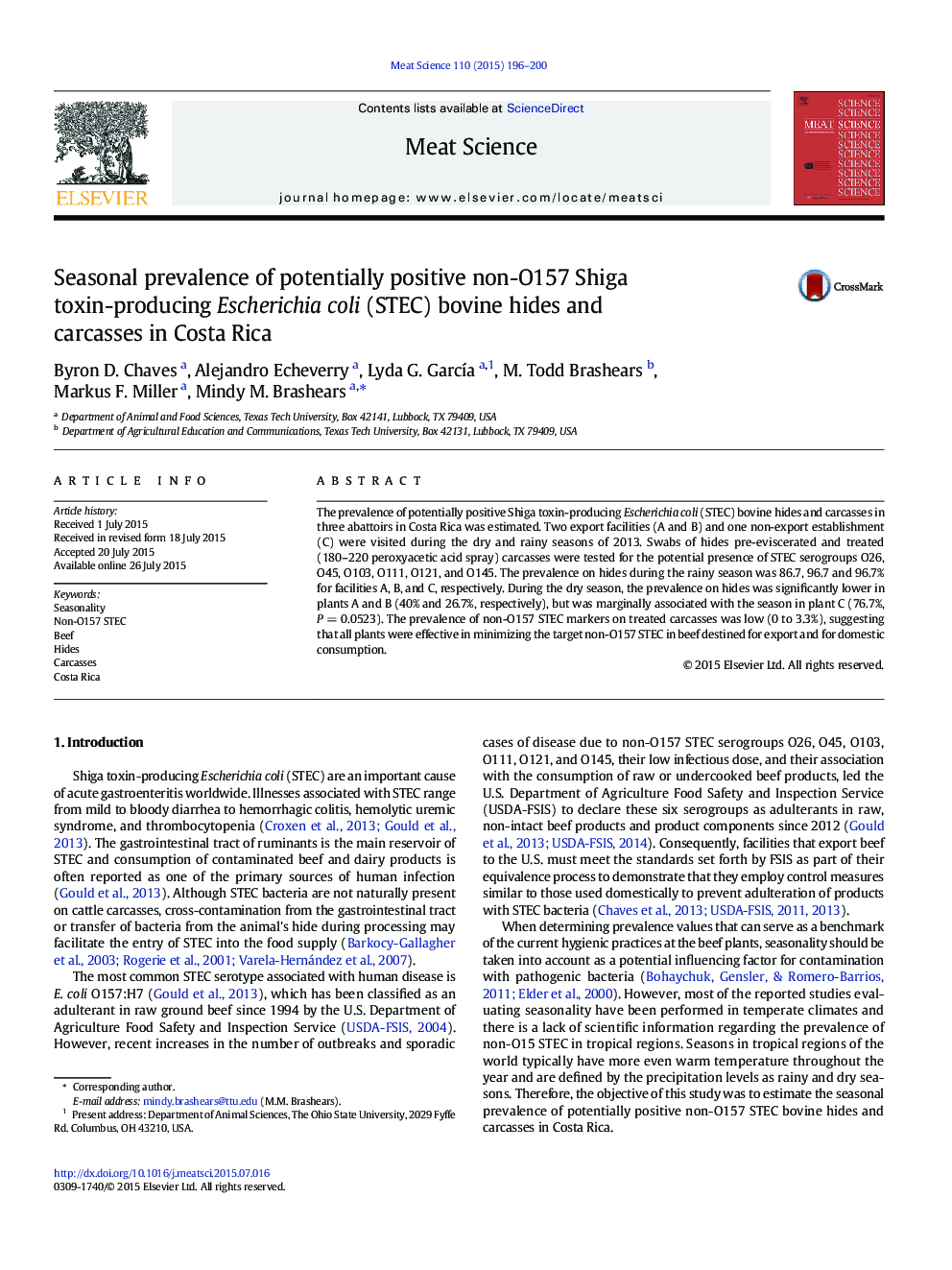| Article ID | Journal | Published Year | Pages | File Type |
|---|---|---|---|---|
| 5791148 | Meat Science | 2015 | 5 Pages |
The prevalence of potentially positive Shiga toxin-producing Escherichia coli (STEC) bovine hides and carcasses in three abattoirs in Costa Rica was estimated. Two export facilities (A and B) and one non-export establishment (C) were visited during the dry and rainy seasons of 2013. Swabs of hides pre-eviscerated and treated (180-220 peroxyacetic acid spray) carcasses were tested for the potential presence of STEC serogroups O26, O45, O103, O111, O121, and O145. The prevalence on hides during the rainy season was 86.7, 96.7 and 96.7% for facilities A, B, and C, respectively. During the dry season, the prevalence on hides was significantly lower in plants A and B (40% and 26.7%, respectively), but was marginally associated with the season in plant C (76.7%, PÂ =Â 0.0523). The prevalence of non-O157 STEC markers on treated carcasses was low (0 to 3.3%), suggesting that all plants were effective in minimizing the target non-O157 STEC in beef destined for export and for domestic consumption.
